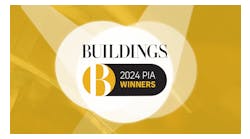The development of national model green building codes and standards has become a dominant focus in the regulatory arena today. Multiple code documents are now available or are scheduled for completion before the end of 2011, and consideration of these model codes by local and state regulators is accelerating.
Yet troubling questions about the impacts of mandatory green building regulations on at risk U. S. commercial real estate markets and our fragile economic recovery remain unanswered.
ASHRAE 189.1
ASHRAE 189.1-2009 Standard for the Design of High-Performance Green Buildings, developed by the American Society of Heating, Refrigerating and Air-Conditioning Engineers in cooperation with the U.S. Green Building Council and the Illuminating Engineering Society, covers all buildings except low-rise residential buildings, and includes renovations and additions to existing buildings. It is not a design guide or rating system (such as LEED or Green Globes) but is instead written in mandatory language intended for adoption and enforcement.
189.1 provides simple compliance paths and more flexible performance options for these six sustainability elements:
- Energy and water conservation and efficiency (including renewable energy systems)
- Land use and development
- Indoor environmental quality
- Impact on the atmosphere, materials, and resources
- Adaptation of existing buildings
- Post-occupancy building commissioning and operations planning.
States and Cities Take Green Design in Their Own Hands
By James Cox
State and municipal officials are taking an active role in exploring emerging energy conservation concepts as a means of lessening the impact of global warming. One emerging trend is the promotion of green or sustainable design requirements in the built environment. Initially, these policymakers focused primarily on public buildings; however, this willingness to legislate green standards has quickly moved to the private sector.
California became the first state in 2007 to adopt a mandatory statewide green building code for residential, commercial, and public building construction. Known as CALGREEN, these codes became effective on January 1, 2011.
The CALGREEN code requires a 20% reduction in indoor water use, separate water meters for indoor and outdoor water use in nonresidential buildings, and mandatory inspections of energy systems for nonresidential buildings over 10,000 square feet. Upon passing state building inspection, California's property owners will have the ability to label their facilities as CALGREEN compliant without using additional, costly third-party certification programs.
Following CALGREEN's adoption, other states moved to tackle sustainable construction legislation. Florida is considering legislation to expand its definition of "sustainable building rating" to include the International Green Construction Code (IgCC). It currently includes the U.S. Green Building Council's LEED rating, the Green Building Initiative's Green Globes rating system, the Florida Green Building Coalition standard or any other nationally recognized, high-performance green building rating system.
The Maryland Legislature is considering a bill that would authorize local jurisdictions to adopt the IgCC and would alter the definition of a "high performance building" to include a building that complies with these requirements. This is in addition to a bill that would require any capital project funded by the state to employ high performance building standards in their construction.
New Jersey is considering a novel approach by funding the construction of a model high performance green demonstration building, designed to demonstrate the effectiveness of high performance building science to achieve up to 90% energy efficiency, as compared to utilizing conventional building construction and technologies.
Massachusetts is in the process of developing a building energy asset rating and labeling program, which is designed to facilitate a direct comparison of energy performance among similar buildings. In contrast to operational ratings, which are based on actual energy use, asset ratings evaluate the energy performance of the building based on the thermal envelope and mechanical and electrical systems.
Initially a pilot program, the goal is to require commercial buildings to acquire an energy asset rating before the building is sold or undergoes major renovations. The proposed program would rate buildings against a zero net energy benchmark, which would result in most existing commercial buildings receiving a low score.
Some municipal governments are taking it a step further and are now mandating energy efficiency requirements to existing buildings. San Francisco passed an ordinance requiring owners to determine a building's energy consumption and make that information available to the public annually. It also requires commercial buildings over 10,000 square feet to conduct energy efficiency audits every five years. Similar ordinances exist in New York City and Washington, D.C. and are expected to be replicated in other major metropolitan areas.
BOMA's involvement in the initial development of Standard 189.1 resulted in more workable and cost effective provisions, trade-offs for renewable energy, and consideration of basic business investment principles. We are also involved in the ongoing development of 189.1, with representation on the continuous maintenance project committee. The current work plan calls for the publication of a 2011 interim edition as well as the next regularly scheduled edition (2013). Many advanced system provisions have already been proposed to the committee and BOMA will work with other commercial real estate interests to ensure inclusion of design, component, and system options that best meet the needs of building owners.
Similar to other green building codes, Standard 189.1 is not intended to apply to all projects nor is it designed to replace current energy, building, mechanical, and other codes that set the baseline for all construction. It is instead meant to reach beyond minimum requirements to mandate significant reductions in energy use, major emphasis on the use of renewable energy systems, stringent water conservation provisions, and extensive building owner and operator education to ensure future efficiencies are realized.
Of critical importance – and unlike current minimum codes in widespread adoption – 189.1 was developed without specific consideration of the additional costs of these measures and therefore the economic impacts of mandatory implementation are not well known.
ICC 700
ICC 700-2008 National Green Building Standard, developed collaboratively by the International Code Council (ICC) and the National Association of Home Builders, covers residential occupancies including detached and attached single family homes, low and high-rise multifamily buildings, hotels and motels, and renovations and additions to existing residential buildings.
Like ASHRAE 189.1, ICC 700 is not a design guide or rating system, is written in code mandatory language intended for adoption and enforcement, and provides both simple compliance paths and more flexible performance options in requirements for similar sustainability elements. Four levels of compliance are also provided, allowing achievement of basic entry-level green building up to the highest level of sustainable construction incorporating energy savings of 60% or higher.
Like ASHRAE 189.1, Standard 700 is not intended to apply to all projects nor is it designed to replace current minimum codes. It was also developed without specific consideration of the additional costs and the associated economic impacts of mandatory implementation.
BOMA was involved in the initial development of ICC 700 to ensure the viability, practicality, and cost-effectiveness of multi-family provisions as they impact mixed-use projects. We are also involved in the current efforts to update the 2008 standard with the next edition slated for publication sometime before the end of 2012.
International Green Construction Code (IgCC)
Developed as a cooperative project between ICC, the American Institute of Architects, and the American Society for Testing and Materials, Draft Version 2.0 of the IgCC is currently in the final stages of development in 2011. It is subject to a code change process including a Public Hearing in May and a Final Action Hearing in November. Once that process is complete, the first edition (2012) of the IgCC will be available along with the other 2012 ICC codes early next year.
The IgCC and ASHRAE 189.1 apply to the same buildings and projects. Like 189.1, IgCC is not a guide or rating system, is written in code mandatory language intended for adoption and enforcement, and provides both simple compliance paths and more flexible performance options. It also encompasses the same sustainability elements found in 189.1 and is not intended to apply to all projects or designed to replace current minimum codes. Importantly, the IgCC references Standard 700 for residential construction and ASHRAE 189.1 as an alternative compliance path for commercial projects.
Adoption
of a green
building code without careful
consideration of the possible
damage to the
local economy can produce
disastrous
results.
The Race to Green
State and local governments throughout the country are racing to "get green", and nothing exemplifies that more than the rush to implement green building regulations. However, adoption of a green building code without careful consideration of the possible damage to the local economy can produce disastrous results. In a disturbing trend, several jurisdictions are considering adoption of the Draft IgCC – a particularly unwise move given the code has not been fully vetted in the ICC consensus process and will almost certainly be extensively modified as over a 1,000 code change proposals are considered in 2011.
It is critical that city and state officials demand that any green building code under consideration be subject to a cost/benefit analysis before consideration of enactment to at least determine if compliance will negatively impact construction activity, lease rates, the tax base, and future development and economic growth. Without that, it is impossible to know or predict the economic impact on the government and the businesses operating within their jurisdictions.
Ron Burton ([email protected]) is vice president of Codes, Standards & Regulatory Affairs at BOMA International. James Cox ([email protected]) is director of State and Local Affairs at BOMA. For more information on BOMA, visit www.boma.org.


